- +30 213 003 7600
- +30 213 003 7600
- info@hellagrolip.com

The sunflower is a highly adaptable plant which produces adequate yields in a wide variety of soils. High yields are achieved in deep, fertile soils of medium mechanical composition, with adequate drainage and good moisture capacity.
Heavy soils retain water and have poor ventilation, which suffocates and causes diseases to the root system, while light soils require increased fertilizing.
When it comes to chemical characteristics, it favors soils with a pH ranging from 5,8 to 8,0, ideally within 6-7,2.
It is a temperate climate plant, with the ideal temperature for growth being 25οC-28oC. High temperatures (>35oC), particularly during flowering and the filling of the seeds, result in reduced yields and have a negative effect on the quantity and quality characteristics of the oil produced.
The sunflower develops a rich and deep root system which allows it to better utilize the water and nutrients in the deeper layers of the soil. Although its nutritional requirements are lower than those of other crops, adequate nutrition is crucial to the early growth of the plants, flowering, the production of seeds, and the oil concentration of the seeds. Targeted fertilizing, which aims to fully cover the nutritional needs of the crops, is key to achieving high and quality yields:
|
Fertilization units to produce 3 t per hectare |
|||
|
Type |
(N) |
(P2O5) |
(K2O) |
|
Sunflower |
120-160 |
40-70 |
90-140 |

Adequate moisture and soil temperature (>10*C), combined with the proper depth of sowing (3-5cm), constitute the most important factors for the fast and uniform growth of the crop.
At the early stages, plant growth is slow and it is mainly localized at their underground part. The plants develop a robust and deep root system, which allows them to utilize the water and nutrients in the deeper layers of the soil.
After the 8th true leaf has emerged, the plant enters the phase of vegetative growth and produces a rich leaf area. The flower head begins to form inside the plants, and the spaces where the flowers will develop gradually form on it. The head becomes visible once the plants have developed 14-16 leaves, while the flowers become fully differentiated and developed two weeks before flowering.
At the stage of fast growth, the plants absorb high quantities of nutrients and water in order to form a robust root system and rich foliage, which should support the formation of the head, flowering, and the filling of the seeds at later stages.
The nutrient absorption rate is low until the 4th leaf, increases between the 4th and 8th leaves, and is maximized after the 8th leaf, until the emergence of the head.
Nitrogen (Ν) contributes to the development of the leaf area, enhances photosynthesis, and increases the diameter of the inflorescence and the number of flowers formed on it, boosting the production potential.
Phosphorus (P) boosts the growth of the root system and the absorption of nutrients and water. It increases the number of formed flowers and improves flowering, thus increasing the production.
Potassium (Κ) favors the mechanical support of the frame of the plants, boosts root and leaf growth, enhances photosynthesis, regulates the water balance of the plants, and protects the crops from diseases and adverse weather conditions.
Regarding secondary elements, Sulphur (S) plays an important part in the utilization of Nitrogen and the development of the leaf area, while when it comes to Trace elements, Boron (Β) participates in the growth of young tissue and increases the production and fertility of pollen.

This is the most crucial stage for crop growth and yields. First, immature inflorescence emerges at the top of the plants in the form of a small bud surrounded by a cluster of leaves.
The plants grow in height and continue to produce leaves up to the onset of flowering, and they complete the growth of the flowers, which reach reproductive maturation and are ready to be fertilized.
Flowering begins with the opening of the exterior immature ray flowers (yellow petals), gradually moves from the periphery to the center of the flower head, and is completed within 5-8 days with the wilting of the exterior flowers.
Throughout this period, from the emergence of the inflorescence to the completion of flowering, the plants have quite high requirements regarding nutrition and the environmental conditions. They absorb nutrients from the soil in order to form photosynthetic products, and at the same time they break down part of the substances they have stored in their leaves and stem in order to supply the head.
Adequate nutrients and water and the appropriate environmental conditions are a necessary condition for healthy flowering and successful pollination, and they have a determining effect on the final produce.
Nitrogen (Ν) increases the number of produced leaves and the production of photosynthetic products, and it boosts flowering and pollination.
Phosphorus (P) increases the number and fertility of the flowers and provides the plant with the necessary energy for flowering and pollination, as well as the structural elements for the development of seeds later on.
Potassium (Κ) is absorbed in large quantities and stored in the plant tissues, increasing the production and transfer of photosynthetic substances to the head and flowers.
Boron (Β) increases the production and fertility of pollen, thus improving flowering and fruit setting.

With the completion of flowering, the development of the seeds and oil production begin. At a first stage, the hull of the seed starts growing, and it reaches its final size two weeks after flowering.
The development of the seed embryo begins on the 8th day after pollination with the accumulation of water, sugars, and proteins, followed by the formation of lipids at a later stage, which determines the oil concentration of the seeds.
About a month after flowering, the bracts surrounding the head turn brown from green and become brittle, while the base of the head turns yellow. These changes signify natural ripening, during which the filling of the seeds and production of oil are completed.
The dry weight of the seeds and their oil concentration and water reach their maximum value, and all that remains is for their high moisture (>30%) to gradually lessen so that they can be harvested a month later.
Throughout the period of the filling of the seeds and oil formation, in order to cover their increased needs, the plants transfer large quantities of the substances stored in the leaves to the growing seeds, while they continue to take up nutrients from the soil, particularly Nitrogen and Phosphorus.
Maintaining the foliage in a healthy condition, the presence of moisture and nutrients in the soil, and the appropriate temperature play an important part in achieving high yields in seeds and oil.
Nitrogen (Ν) continues to be absorbed in irrigated crops. It contributes to the preservation of the leaves and it increases the number and weight of the seeds. At this stage, excessive availability of Nitrogen has a negative effect on the plants, reducing the oil concentration of the seeds and delaying harvest.
Phosphorus (P), which continues to be taken up, and Potassium (Κ), which the plants had stored at previous stages, increase the size and weight of the seeds, improve its oil concentration, and enhance the quantity and quality characteristics of the production.
The goal is to cover the needs of the crops in nutrients which are necessary for the formation of a rich root system and a robust vegetative growth, as well as at the stages of flowering and fruiting later on.
In dry crops, the full amounts of Nitrogen (Ν), Phosphorus (P), and Potassium (Κ) are supplied once through basic fertilization.
In irrigated crops, the following quantities are supplied through basic fertilization:
● 1/3 – 1/2 of Nitrogen (Ν)
● The full amount of Phosphorus (P)
● The full amount of Potassium (Κ)
The Nitrogen supplied through basic fertilizing needs to be in either Ammoniacal or stabilized Ammoniacal. In dry crops, stabilized Ammoniacal Nitrogen helps avoid the development of excessive early vegetation, which depletes the water reserves in the soil. In irrigated crops, it helps reduce Nitrogen losses and secure supply to the crops at later crucial stages of growth and fruiting.
The use of complex mult-nutrient fertilizers with nanopolymer technology (Ωmega fert) or fertilizers with stabilized Ammoniacal Nitrogen (NutrActive), is recommended. They increase the utilization of nutrients from the crop and scale up their supply over a long period of time, keeping the plant growth rate high throughout its biological cycle.
Sunflower fertilizing | ||
Type of Fertilizer | Stage of application | Dosage (kg/ha.) |
NutrActive leader 15-15-15 (+15) | Basic fertilization | 250 – 400 kg |
* The dosages mentioned are indicative. Regarding the fertilizing of crops, one should take into account the advice of local agronomists.
The goal is to cover the needs of the crops in Nitrogen and Sulphur, which are necessary for vegetative growth, the formation of the reproductive organs, successful fruit setting, and the filling of the seeds.
Dosage:
● 1/2 – 2/3 of Nitrogen (Ν)
At this stage, adequate supply of Nitrogen and Sulphur to the plants is crucial in order to achieve high yields, as these elements enhance photosynthesis and have a determining effect on the increased number, size, and weight of the seeds and their oil concentration.
The use of Nitrogen fertilizers with nanopolymer technology (Ωmega 26N) or stabilized form of Nitrogen (NutrActive), is recommended, as they are rich in Sulphur, reduce Nitrogen losses from the soil, and secure an adequate supply to the crops until the final stages of the filling of the seeds.
Sunflower fertilizing | ||
Type of Fertilizer | Stage of application | Dosage (kg/ha.) |
NutrActive 27N 27-0-0 (+27) | Top-dressing fertilization | 200 – 250 kg |
* The dosages mentioned are indicative. Regarding the fertilizing of crops, one should take into account the advice of local agronomists.
|
Mode of fertilizing |
||
|
Crop |
Basic fertilization |
Top-dressing fertilization |
|
Sunflower |
NutrActive
|
NutrActive |
Basic fertilizers
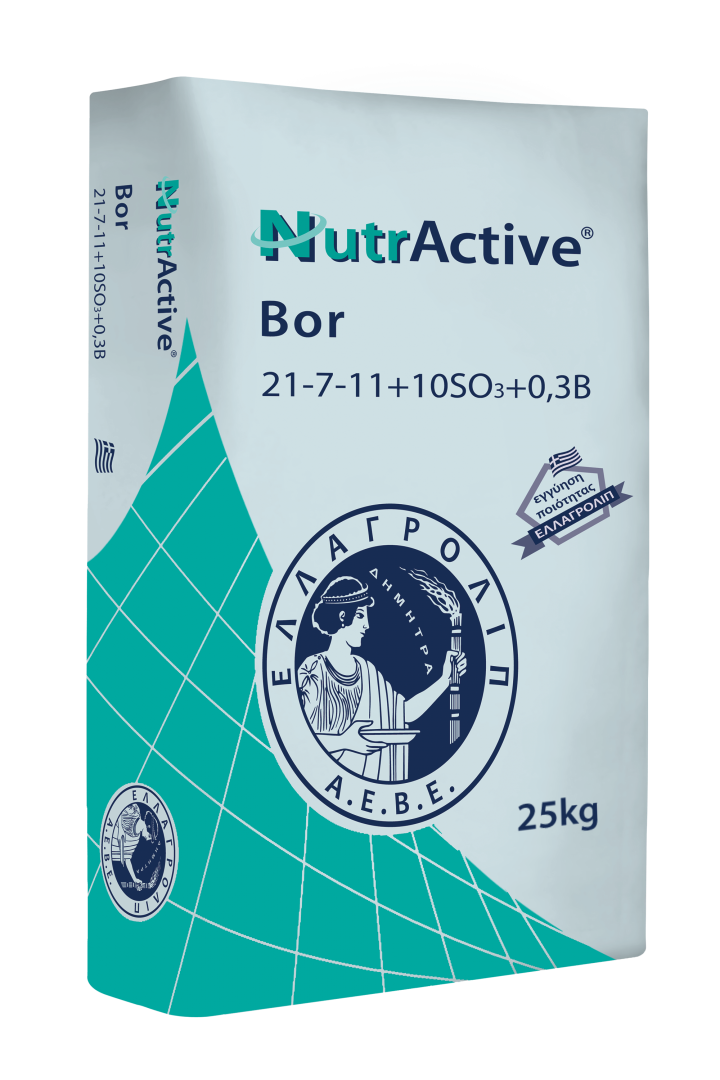
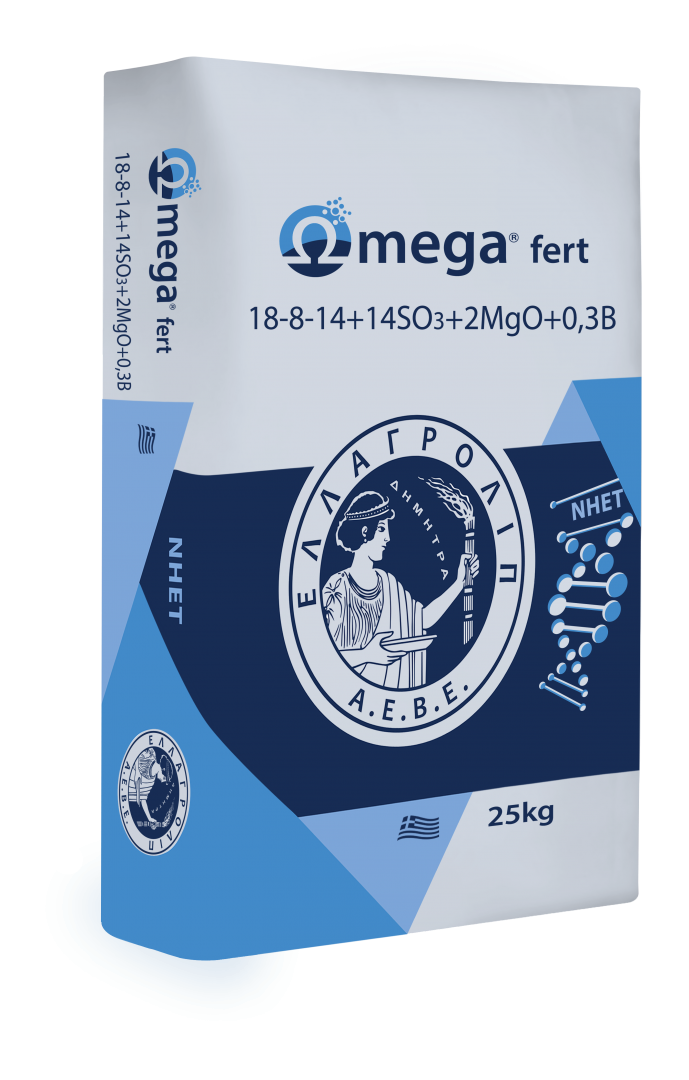
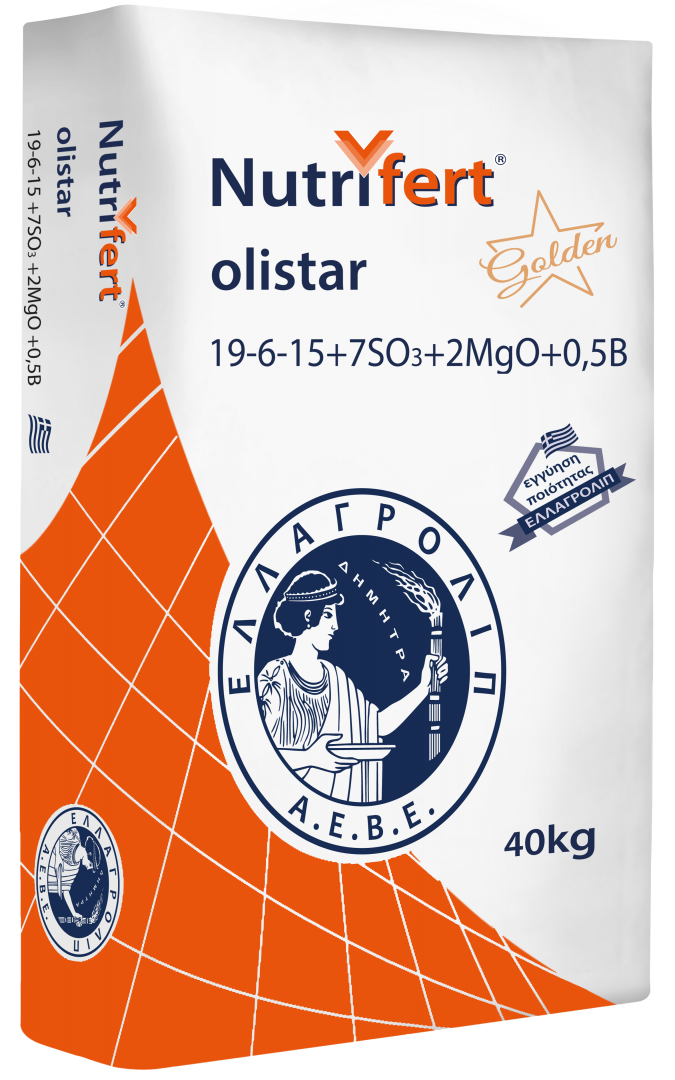
Top-dressing fertilizers
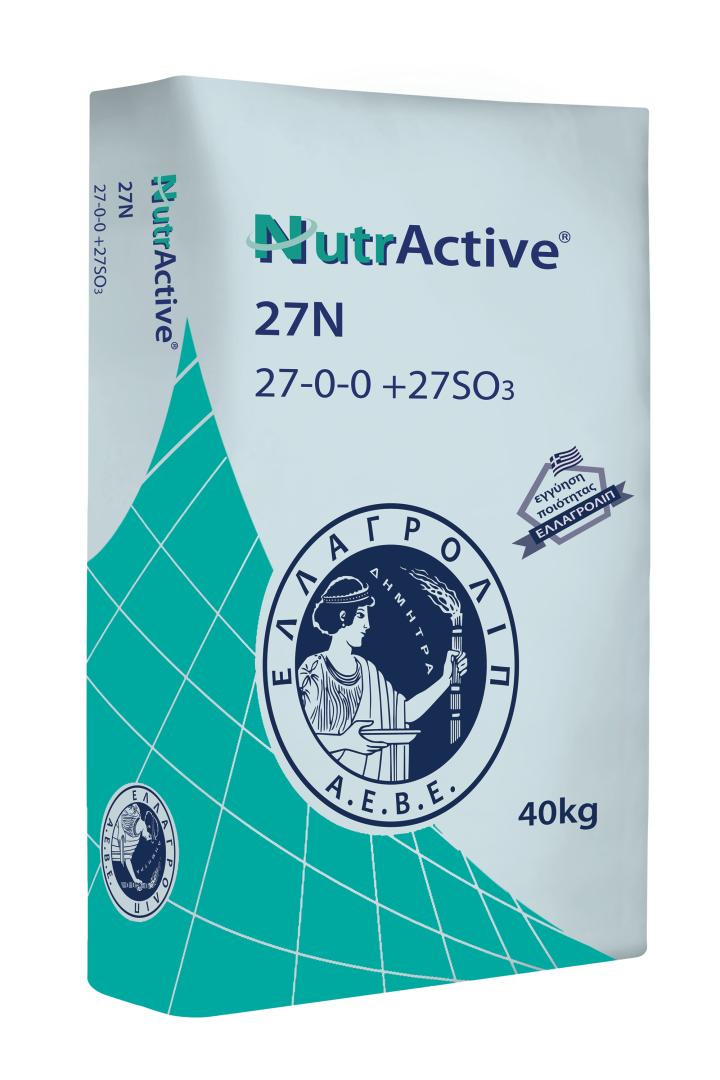
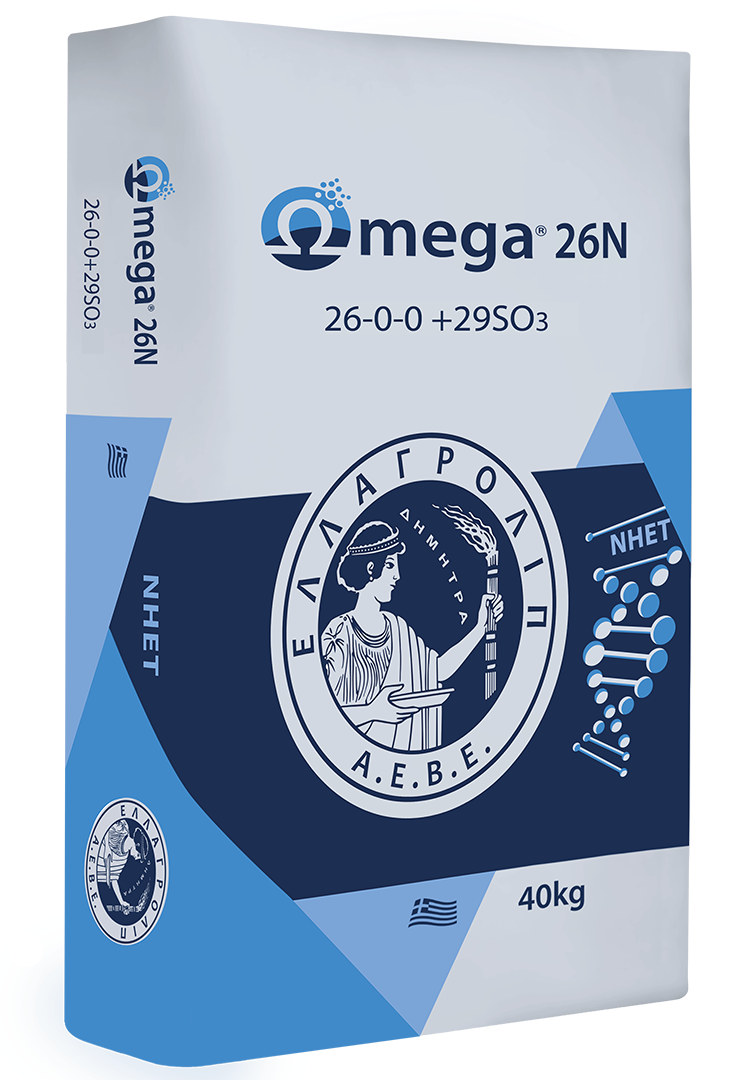
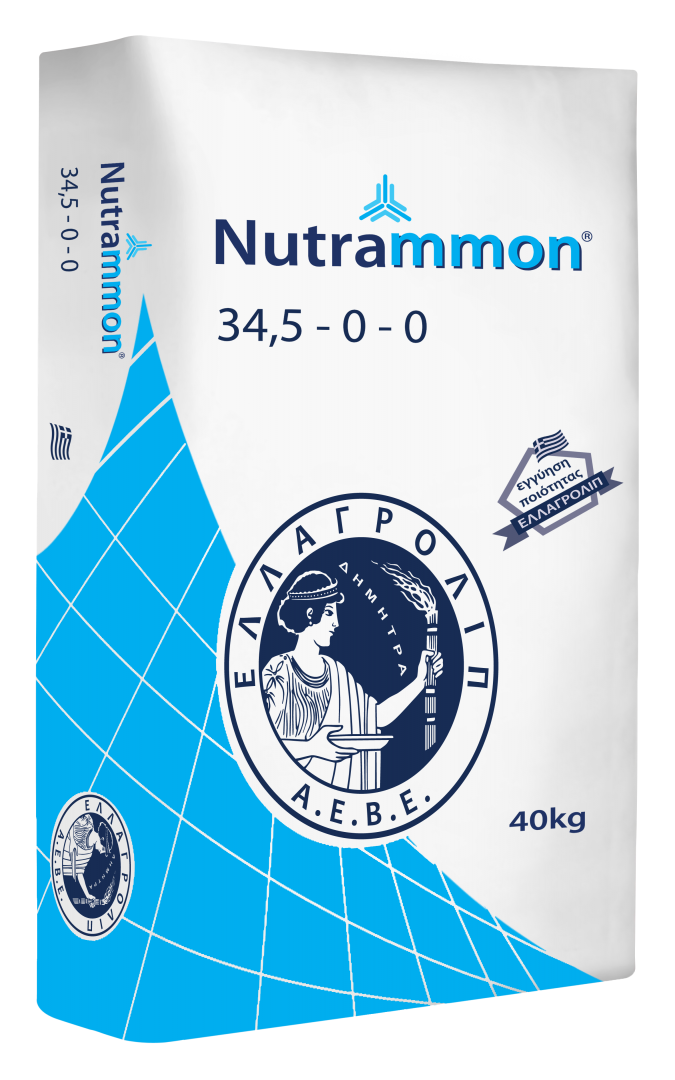
The sunflower is a highly adaptable plant which produces adequate yields in a wide variety of soils. High yields are achieved in deep, fertile soils of medium mechanical composition, with adequate drainage and good moisture capacity.
Heavy soils retain water and have poor ventilation, which suffocates and causes diseases to the root system, while light soils require increased fertilizing.
When it comes to chemical characteristics, it favors soils with a pH ranging from 5,8 to 8,0, ideally within 6-7,2.
It is a temperate climate plant, with the ideal temperature for growth being 25οC-28oC. High temperatures (>35oC), particularly during flowering and the filling of the seeds, result in reduced yields and have a negative effect on the quantity and quality characteristics of the oil produced.
The sunflower develops a rich and deep root system which allows it to better utilize the water and nutrients in the deeper layers of the soil. Although its nutritional requirements are lower than those of other crops, adequate nutrition is crucial to the early growth of the plants, flowering, the production of seeds, and the oil concentration of the seeds. Targeted fertilizing, which aims to fully cover the nutritional needs of the crops, is key to achieving high and quality yields:
|
Fertilization units to produce 3 t per hectare |
|||
|
Type |
(N) |
(P2O5) |
(K2O) |
|
Sunflower |
120-160 |
40-70 |
90-140 |

Adequate moisture and soil temperature (>10*C), combined with the proper depth of sowing (3-5cm), constitute the most important factors for the fast and uniform growth of the crop.
At the early stages, plant growth is slow and it is mainly localized at their underground part. The plants develop a robust and deep root system, which allows them to utilize the water and nutrients in the deeper layers of the soil.
After the 8th true leaf has emerged, the plant enters the phase of vegetative growth and produces a rich leaf area. The flower head begins to form inside the plants, and the spaces where the flowers will develop gradually form on it. The head becomes visible once the plants have developed 14-16 leaves, while the flowers become fully differentiated and developed two weeks before flowering.
At the stage of fast growth, the plants absorb high quantities of nutrients and water in order to form a robust root system and rich foliage, which should support the formation of the head, flowering, and the filling of the seeds at later stages.
The nutrient absorption rate is low until the 4th leaf, increases between the 4th and 8th leaves, and is maximized after the 8th leaf, until the emergence of the head.
Nitrogen (Ν) contributes to the development of the leaf area, enhances photosynthesis, and increases the diameter of the inflorescence and the number of flowers formed on it, boosting the production potential.
Phosphorus (P) boosts the growth of the root system and the absorption of nutrients and water. It increases the number of formed flowers and improves flowering, thus increasing the production.
Potassium (Κ) favors the mechanical support of the frame of the plants, boosts root and leaf growth, enhances photosynthesis, regulates the water balance of the plants, and protects the crops from diseases and adverse weather conditions.
Regarding secondary elements, Sulphur (S) plays an important part in the utilization of Nitrogen and the development of the leaf area, while when it comes to Trace elements, Boron (Β) participates in the growth of young tissue and increases the production and fertility of pollen.

This is the most crucial stage for crop growth and yields. First, immature inflorescence emerges at the top of the plants in the form of a small bud surrounded by a cluster of leaves.
The plants grow in height and continue to produce leaves up to the onset of flowering, and they complete the growth of the flowers, which reach reproductive maturation and are ready to be fertilized.
Flowering begins with the opening of the exterior immature ray flowers (yellow petals), gradually moves from the periphery to the center of the flower head, and is completed within 5-8 days with the wilting of the exterior flowers.
Throughout this period, from the emergence of the inflorescence to the completion of flowering, the plants have quite high requirements regarding nutrition and the environmental conditions. They absorb nutrients from the soil in order to form photosynthetic products, and at the same time they break down part of the substances they have stored in their leaves and stem in order to supply the head.
Adequate nutrients and water and the appropriate environmental conditions are a necessary condition for healthy flowering and successful pollination, and they have a determining effect on the final produce.
Nitrogen (Ν) increases the number of produced leaves and the production of photosynthetic products, and it boosts flowering and pollination.
Phosphorus (P) increases the number and fertility of the flowers and provides the plant with the necessary energy for flowering and pollination, as well as the structural elements for the development of seeds later on.
Potassium (Κ) is absorbed in large quantities and stored in the plant tissues, increasing the production and transfer of photosynthetic substances to the head and flowers.
Boron (Β) increases the production and fertility of pollen, thus improving flowering and fruit setting.

With the completion of flowering, the development of the seeds and oil production begin. At a first stage, the hull of the seed starts growing, and it reaches its final size two weeks after flowering.
The development of the seed embryo begins on the 8th day after pollination with the accumulation of water, sugars, and proteins, followed by the formation of lipids at a later stage, which determines the oil concentration of the seeds.
About a month after flowering, the bracts surrounding the head turn brown from green and become brittle, while the base of the head turns yellow. These changes signify natural ripening, during which the filling of the seeds and production of oil are completed.
The dry weight of the seeds and their oil concentration and water reach their maximum value, and all that remains is for their high moisture (>30%) to gradually lessen so that they can be harvested a month later.
Throughout the period of the filling of the seeds and oil formation, in order to cover their increased needs, the plants transfer large quantities of the substances stored in the leaves to the growing seeds, while they continue to take up nutrients from the soil, particularly Nitrogen and Phosphorus.
Maintaining the foliage in a healthy condition, the presence of moisture and nutrients in the soil, and the appropriate temperature play an important part in achieving high yields in seeds and oil.
Nitrogen (Ν) continues to be absorbed in irrigated crops. It contributes to the preservation of the leaves and it increases the number and weight of the seeds. At this stage, excessive availability of Nitrogen has a negative effect on the plants, reducing the oil concentration of the seeds and delaying harvest.
Phosphorus (P), which continues to be taken up, and Potassium (Κ), which the plants had stored at previous stages, increase the size and weight of the seeds, improve its oil concentration, and enhance the quantity and quality characteristics of the production.
The goal is to cover the needs of the crops in nutrients which are necessary for the formation of a rich root system and a robust vegetative growth, as well as at the stages of flowering and fruiting later on.
In dry crops, the full amounts of Nitrogen (Ν), Phosphorus (P), and Potassium (Κ) are supplied once through basic fertilization.
In irrigated crops, the following quantities are supplied through basic fertilization:
● 1/3 – 1/2 of Nitrogen (Ν)
● The full amount of Phosphorus (P)
● The full amount of Potassium (Κ)
The Nitrogen supplied through basic fertilizing needs to be in either Ammoniacal or stabilized Ammoniacal. In dry crops, stabilized Ammoniacal Nitrogen helps avoid the development of excessive early vegetation, which depletes the water reserves in the soil. In irrigated crops, it helps reduce Nitrogen losses and secure supply to the crops at later crucial stages of growth and fruiting.
The use of complex mult-nutrient fertilizers with nanopolymer technology (Ωmega fert) or fertilizers with stabilized Ammoniacal Nitrogen (NutrActive), is recommended. They increase the utilization of nutrients from the crop and scale up their supply over a long period of time, keeping the plant growth rate high throughout its biological cycle.
Sunflower fertilizing | ||
Type of Fertilizer | Stage of application | Dosage (kg/ha.) |
NutrActive leader 15-15-15 (+15) | Basic fertilization | 250 – 400 kg |
* The dosages mentioned are indicative. Regarding the fertilizing of crops, one should take into account the advice of local agronomists.
The goal is to cover the needs of the crops in Nitrogen and Sulphur, which are necessary for vegetative growth, the formation of the reproductive organs, successful fruit setting, and the filling of the seeds.
Dosage:
● 1/2 – 2/3 of Nitrogen (Ν)
At this stage, adequate supply of Nitrogen and Sulphur to the plants is crucial in order to achieve high yields, as these elements enhance photosynthesis and have a determining effect on the increased number, size, and weight of the seeds and their oil concentration.
The use of Nitrogen fertilizers with nanopolymer technology (Ωmega 26N) or stabilized form of Nitrogen (NutrActive), is recommended, as they are rich in Sulphur, reduce Nitrogen losses from the soil, and secure an adequate supply to the crops until the final stages of the filling of the seeds.
Sunflower fertilizing | ||
Type of Fertilizer | Stage of application | Dosage (kg/ha.) |
NutrActive 27N 27-0-0 (+27) | Top-dressing fertilization | 200 – 250 kg |
* The dosages mentioned are indicative. Regarding the fertilizing of crops, one should take into account the advice of local agronomists.
|
Mode of fertilizing |
||
|
Crop |
Basic fertilization |
Top-dressing fertilization |
|
Sunflower |
NutrActive
|
NutrActive |
Basic fertilizers



Top-dressing fertilizers



